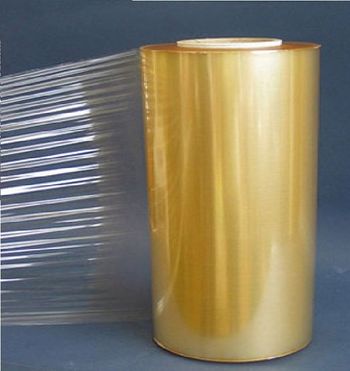Elasticity vs plasticity

Objects deform when pushed, pulled, and twisted. Elasticity is the measure of the amount that the object can return to its original shape after these external forces and pressures stop.[2] This is what allows springs to store elastic potential energy.
The opposite of elasticity is plasticity; when something is stretched, and it stays stretched, the material is said to be plastic. When energy goes into changing the shape of some material and it stays changed, that is said to be plastic deformation. When the material goes back to its original form, that's elastic deformation.[3] Mechanical energy is lost whenever an object undergoes plastic deformation. Manufacturing goods from raw materials involves a great deal of plastic deformation. For example, rolling steel into a particular shape (like rebar for construction) involves plastic deformation, since a new shape is created.

Most materials have an amount of force or pressure for which they deform elastically. If more force or pressure is applied, then they have plastic deformation. Materials that have a fair amount of plastic deformation before breaking are said to be ductile.[3] Materials that can't stretch or bend much without breaking are said to be brittle. Copper is quite ductile, which is part of why it is used for wires (most metals are ductile (but copper especially so). Glass and ceramics are often brittle; they will break rather than bend!
To learn more about elasticity please see hyperphysics.
For Further Reading
- Elastic potential energy
- Malleable
- Copper
- Metal
- Or explore a random page
Reference
- ↑ ]"Free Image on Pixabay - Spring, Helical, Metal, Steel", Pixabay.com, 2018. [Online]. Available: https://pixabay.com/en/spring-helical-metal-steel-1453075/. [Accessed: 15- Jun- 2018].
- ↑ R. D. Knight, "Elasticity," in Physics for Scientists and Engineers: A Strategic Approach, 2nd ed. San Francisco, U.S.A.: Pearson Addison-Wesley, 2008, pp. 278.
- ↑ 3.0 3.1 Hawkes et al, "Deformation and Elasticity," in Physics for Scientists and Engineers, 1st ed. Toronto: Cengage, 2014, pp. 265-268.
- ↑ "File:Pvc-Film.jpg - Wikimedia Commons", Commons.wikimedia.org, 2018. [Online]. Available: https://commons.wikimedia.org/wiki/File:Pvc-Film.jpg. [Accessed: 15- Jun- 2018].

